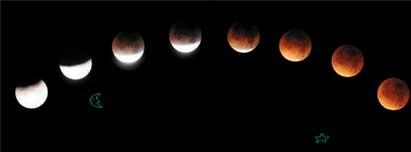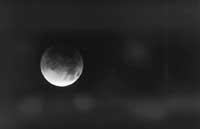Fascinated by shows

And all this has surprised many. While astronomers were analyzing the trajectory of comet Hale-Bopp, one of the most beautiful shows of recent centuries, the Japanese Yuji Hyakutake discovered last January the comet that has put thousands of people looking to the sky.

By the time this article is published, the news about the comet will be well known to many of you; many readers may have the possibility to see Hyakutake directly. Whoever has seen the comet from a dark place will agree with us saying that the show offered by the comet was beautiful. We have been able to see its long tail and, what is more surprising, it has been seen in the cities without any instrument, although the clarity of the city concealed the tail of the comet.
Comet Hyakutake passed on March 25 at 15,000 kilometers from Earth. Its tail was 500 thousand kilometers, that is, longer than the distance from the Earth to the Moon. In the last days of March it was more difficult to make observations correctly, as the moon filled the show faded. Convened by the Department of Astronomy of Aranzadi, people gathered at the Paseo Nuevo in San Sebastian to observe the comet, where about 4,000 people gathered. The Instituto de Astrofísica de Canarias coordinated the departures organized by the comet Hyakutake and the astronomy groups of the Spanish state, which aroused great attention worldwide. In Donostia we put telescopes for people to see the comet, but everyone who approached it was informed of the possibility of seeing it from a darker place. We also recommended that they do it.

With the Bura and the eyes in Hyagudos, the night of April 3 to 4, with the full Moon, we could see the total eclipse of the Moon. In Gipuzkoa the mists did not fail and to correctly observe the eclipse, the Aranzadi team had to head towards Navarre. The show was really beautiful: clear and full of color, as we tried to reflect on the photos.
As a testimony to those long hours dedicated to heaven, we have brought the following pictures. The photos of the comet were made with small 28-20 mm telephoto lenses to catch the tail. To capture the image of the eclipse we use the large telephoto lens so that the Moon appears in its integrity and beauty. As for the photo, we would like to thank the collaboration of the shop Fotoperiodismo de San Sebastián, which is in charge of the necessary material for the realization of this photographic report.
As we have said, the Ortzia has offered us a unique show. Fortunately, this same year we will have more options and, although not usual, soon there will be more comets and moon eclipses.
The next comet that will visit us will be the reader, since in the February issue we talk quite long about the comet Hale-Bopp. As we said then, experts believe that its magnitude will be 9 and the latest observations have confirmed that it will be brighter. Hyakutake txikia can match up! In any case, we cannot know beforehand whether this is going to be so and therefore let us be cautious.

Predicting that kite will be spectacular is not easy, but so far Hale-Bopp has looked good. In August we will know more specifically its evolution when we begin to sublimate the water. In any case, astronomers have announced that it will at least be a show up to Hyakutake.
And the lunar eclipse will be on September 27. Everything points out that it will be very similar to that of April. We will have many options to make more photos.





